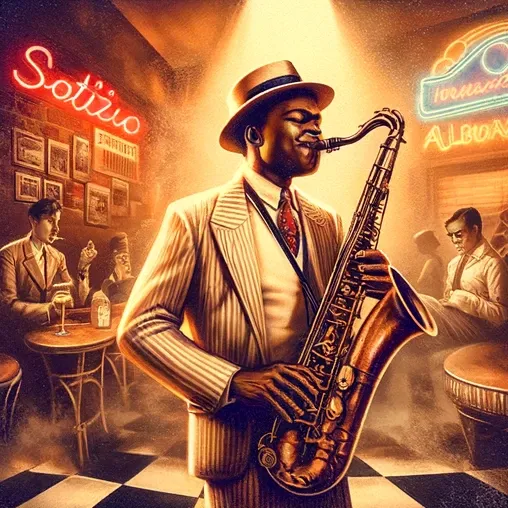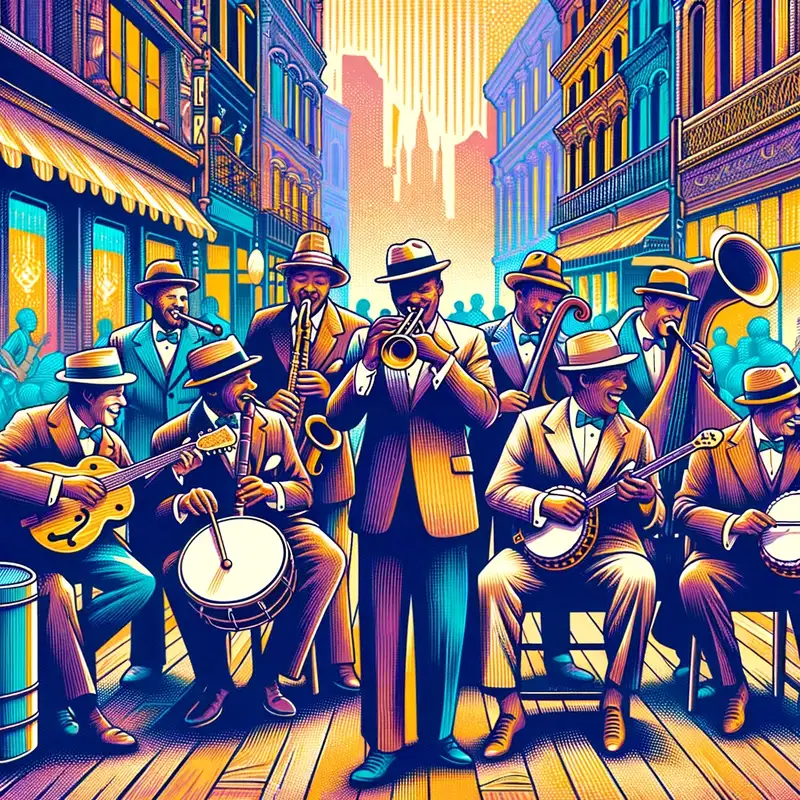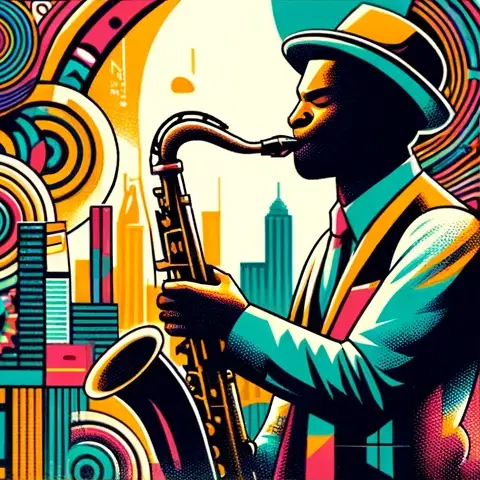Free Jazz

If jazz is a conversation, then Free Jazz is a heated debate where everyone talks at once and somehow makes sense.
Table of Contents
What’s Free Jazz?
You’ve heard jazz, but Free Jazz is its untamed sibling, the rebel child of the family. Birthed in the late 1950s and early ’60s, Free Jazz threw the rule book out the window. No fixed scales, no predictable chord progressions, no set tempos, and certainly no boundaries. In short, it’s like jazz without borders – a democratic chaos of sound.
The Maestros
Want to know the people that made Free Jazz happen? Here’s your crash course:
- Ornette Coleman: A saxophonist and the godfather of Free Jazz. His 1959 album “The Shape of Jazz to Come” literally shaped what was to come.
- Cecil Taylor: A pianist who turned his keyboard into an orchestra of its own.
- Albert Ayler: His tenor sax could scream, whisper, and everything in between.
- Sun Ra: This guy believed he was from Saturn and his music kinda makes you believe him.
Instruments
Of course, we’ve got your saxes, trumpets, and drums, but Free Jazz also opens the stage for non-traditional jazz instruments like the oboe, harp, or electronic gadgets. Plus, the musicians often play them in non-traditional ways.
The Technique
- Collective Improvisation: It’s often a group effort, where everyone improvises together.
- Extended Techniques: Players use unconventional methods like overblowing or striking instruments to create new sounds.
- Time Flexibility: Forget about tapping your foot; the rhythm can be free, fractured, or non-existent.
Free Jazz Today
Free Jazz is very much alive today. Musicians like Ken Vandermark, Matana Roberts, and Peter Brötzmann are keeping the fire stoked and unpredictable as ever.
Why You Might Just Fall in Love with Free Jazz?
- Freedom of Expression: This is as raw and unfiltered as music gets.
- Mental Workout: This stuff challenges you to listen in a whole new way.
- Emotional Depth: It can be chaotic, but there’s often an intense emotional core to Free Jazz.
A Free Jazz Starter Pack
So, you’re ready to dive in? Here are some fundamental listens:
- Ornette Coleman’s “Lonely Woman”
- Cecil Taylor’s “Unit Structures”
- Albert Ayler’s “Spiritual Unity”
You’re now equipped with the basic survival kit to navigate the wild world of Free Jazz.
FAQ
What Is Free Jazz?
Free Jazz is an avant-garde jazz subgenre that’s all about the freedom to express, to improvise, and to challenge musical conventions. Expect unpredictability – no fixed scales, no set chord progressions, and often no regular time signatures.
Is Free Jazz Just Chaos?
While it might sound like organized chaos, there’s often a method to the madness. Free Jazz musicians are usually highly skilled and use their talents to explore new forms of musical expression. So it’s not “anything goes”; it’s more like “anything’s possible.”
What’s the Connection Between Free Jazz and Politics?
Free Jazz emerged in the late 1950s and ’60s, a time of significant social and political change. Many artists used the genre as a platform for advocating civil rights and freedom, making Free Jazz not just a musical but also a social phenomenon.


